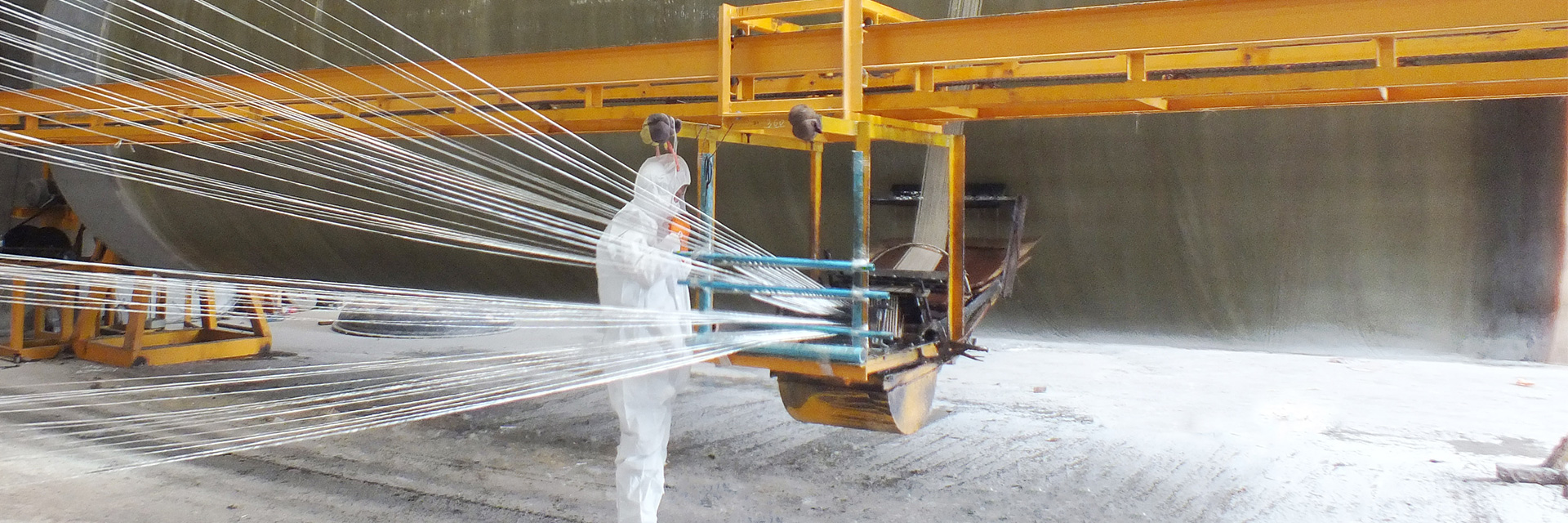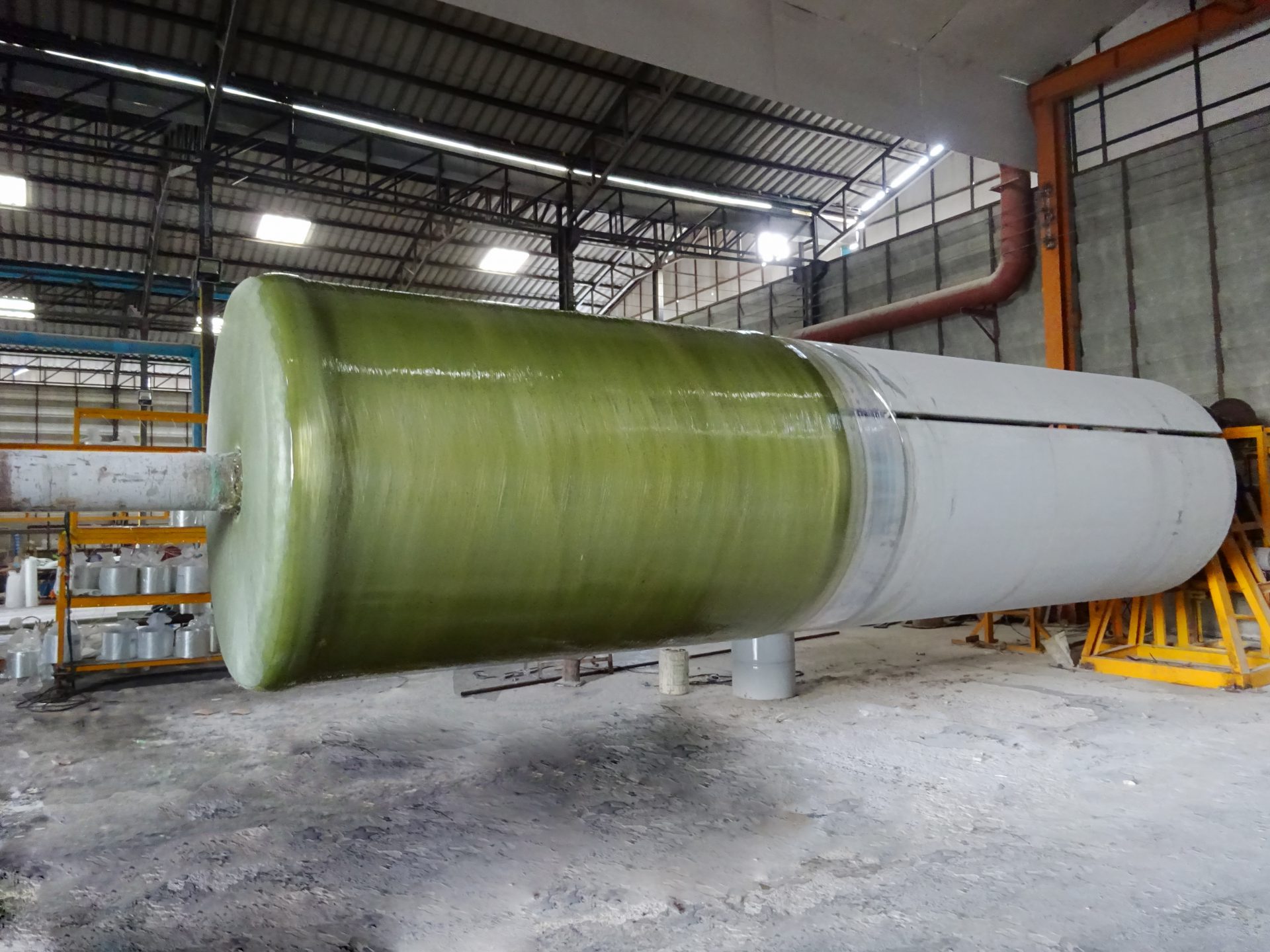What is fiberglass made from?

What is fiberglass made from?
We selected materials properly in order to achieve high-quality products. We need to select a variety of materials in the manufacturing process because each has its own unique strength. The process of material selection is the step our team gives much importance to.
1.Unsaturated Polyester Resin
Or for short, the resin is a liquid plastic that is most commonly used in manufacturing fiberglass product due to its low cost. It is easy to cast and has extra hardness. There are many types of polyester resin, such as clear, heat resistant, or extra resistant to acidity-alkalinity. The selection of polyester resin should be considered from the nature of usage, such as fiberglass work, casting work, artificial glasswork (transparent cast), photo coating, button making or car color coating, etc.
Resin grade can be classified according to the properties of the resin as follows:
1.1) Ortho-phthalic: suitable for general use.
1.2) Isophthalic: resistant to acidity-alkalinity.
1.3) Bisphenol: high resistant to acidity-alkalinity.
1.4) Chlorendics: high resistant to acidity-alkalinity.
1.5) Vinyl ester: high resistant to acidity-alkalinity, strong and durable (the property is only second to epoxy resin).
2. Styrene Monomer
A solvent that enhances the reaction. It is used to mix in polyester resin and gel coat for about 10-20% to liquefy and make it more convenient to spray or apply.
3. Accelerator
It is used to accelerate polymerization, which turns liquid plastic into hard plastic. The commonly used accelerator is Cobalt Naphathenate, for about 0.2%.
4. Hardener
It is used to cause polymerization, which turns liquid plastic into hard plastic. During the reaction, the temperature can go up to 100 degrees Celsius. It should be used for about 0.5-2.0% but not exceed 4%.
5. Fiberglass
Fiberglass acts as a strengthening agent for polyester resin, like rebar in concrete. There are many different shapes, be it roving, chopped strands, Mat, and fabrics. Hence, fiberglass should be selected properly to suit the workpiece and manufacturing method.
Roving – a long line, rolled into a tube, suitable for the spraying, pipe-wrapping, and horizontal-pulling types of manufacturing.
Chopped Strands – a short line, suitable for liquid pressing method, which mixes chopped strand fiberglass with polyester resin and press into mold.
Chopped Strands Mat – a popular fiberglass that comes in different sizes, for example, 300, 450, 600 (grams per square meter). The light fiber is used for a small workpiece and the thick one for a large workpiece.
Continuous Strands Mat – is a fiber that is more reinforced than the shorter one. It is used in manufacturing by machines. Size no. 300, 450, 600 are popularly used.
Surfacing Mat – is used to add as reinforcement to the first layer following the gel coat in special or small workpieces. The most popular size to use is number 30.
Fine Woven Roving – is used in workpieces that require extra strength or as the 2nd-3rd layer following the gel code. The size numbers are 25, 100, 130, 200, 300.
Coarse Woven Roving – is used for large workpieces that require extra strength, such as boats, by alternating with chopped strands type. The size numbers are 600 and 800.
Yarn fiberglass is a thread that comes like yarn through twisting and weaving into a special type of woven glass fiber.
Specially woven fabrics, fiberglass is a fine type that has great strength.
6. Gel Coat
It is the part that covers the surface of fiberglass products. It has a wet powder-like appearance that can be mixed with resin in various colors. Gel coat makes the surface appears smooth, beautifully colored, and the fiberglass is concealed.
To use: Gel coate + Cobalt Naphathenate 0.2% + Color 15-20% + Hardener 0.5-2.0%.
7. Pigment
A mixing of color in resin and gel coats. The pigment has a grease-like consistency, used in a ratio of 15-20% of the resin.
8. Cleaning solution (Solvent)
The most popular is Acetone, which is a flammable, colorless liquid that has a pungent odor stronger than thinner. It is used for cleaning resin-contaminated tools and equipment. Thinner may be used as well but do not use Acetone and resin to liquefy because it will cause the resin to loose its consistency.
9. PVA Release Agent
A colorless liquid that smells like alcohol. It has a glue-like stickiness. It can be applied or sprayed in a thin layer. Soluble in water but insoluble in resin or mono.
10. Mold Release Wax
Developed as an alternative to PVA. Its appearance is similar to floor polishing wax and comes in many colors such as pale yellow or blue. It has special ingredients that help to release mold. For the first few usages for new mold, the wax should be applied and scrubbed several times so that it can be absorbed into the mold first (should not use wax for a prototype but should use PVA only).
The mold-releasing wax can only be used with gel coats. One-time polishing wax can be used for 3-4 removal of the mold. Wax should be applied to the edge of the mold and scrubbed every time of starting work.
11. Talcum
It is a fine white powder used to mix with resin and make a primer on a wooden, plastered, and polyurethane prototype. After mixing, polishing will make a smooth, glossy finish. It can also be made a glue connecting fiberglass workpieces.
12. Light powder
It is a clear white powder that’s very lightweight. It is commonly used to mix with resin to make a gel code.
13. Mixing container
Use a plastic bowl or bucket with a smooth surface which is commonly available.
14. Stirring stick
Use clean, smooth wood suitable for the container.
15. Volumetric tube or scale
For measuring the volume of materials.
16. Brush and roller
Brush is used to apply resin and gel coats, while the roller is used to apply resin and force air out for large workpieces. There are many types of rollers:
– Long soft bristle roller – to dip in resin and apply on the first stage of fiberglass
– Hard bristle roller (pig hair) – to force air bubbles out after using a soft white brush
– Green short bristle roller – to smooth the fiberglass after using the pig hair roller
– Helical rollers are used for curved workpieces.
17. Sponge
Apply PVA onto molds for small work or experimental work. May use a brush or paintbrush.
18. Knife and scissors
Use to cut fiberglass sheets and the edge of the hardening workpiece. The knife must be very sharp. Nowadays, it is popular to use a large blade cutter.
19. Hammer and wooden wedge
Rubber hammer – to knock on hardened workpieces and cause gliding, which makes it easier to remove from the mold.
Steel Hammer – To hammer a wedge to remove mold.
Wooden wedge – to hammer around the edges between a template or prototype and the workpiece, so the workpiece can be pushed out.
20. Trowel
Use for leveling the resin, fixing blemishes on prototypes, templates, and workpieces.
21. Polishing machine
Use for exfoliating mold and workpiece with wax to smoothen the surface instead of hand polishing.
22. Rubber gloves
Use for working, helping to protect yourself from fiberglass.
23. Cloth to cover your nose
Use to protect yourself from fiberglass and resins.
- Categories :

